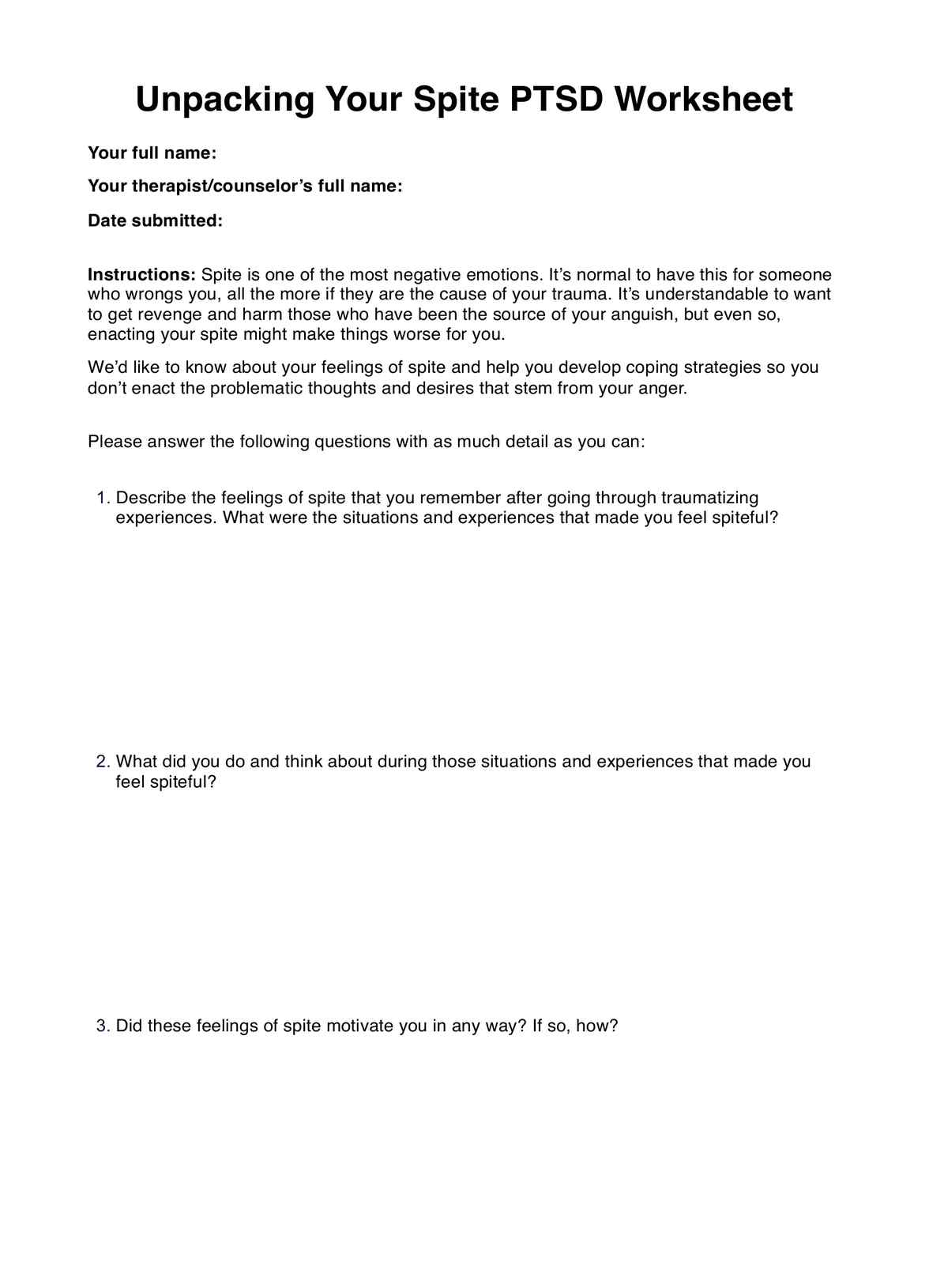Anger and spite are different, but it’s easy to mistake why they are because they’re closely related. Anger is characterized by antagonism toward someone or something that upsets or frustrates you. Spite stems from anger and is characterized by a malicious desire or intent to annoy, offend, or harm someone.
The Unpacking Your Anger PTSD Worksheet examines the antagonism people feel when they are wronged. This worksheet explores the desire to enact harmful things to others.












